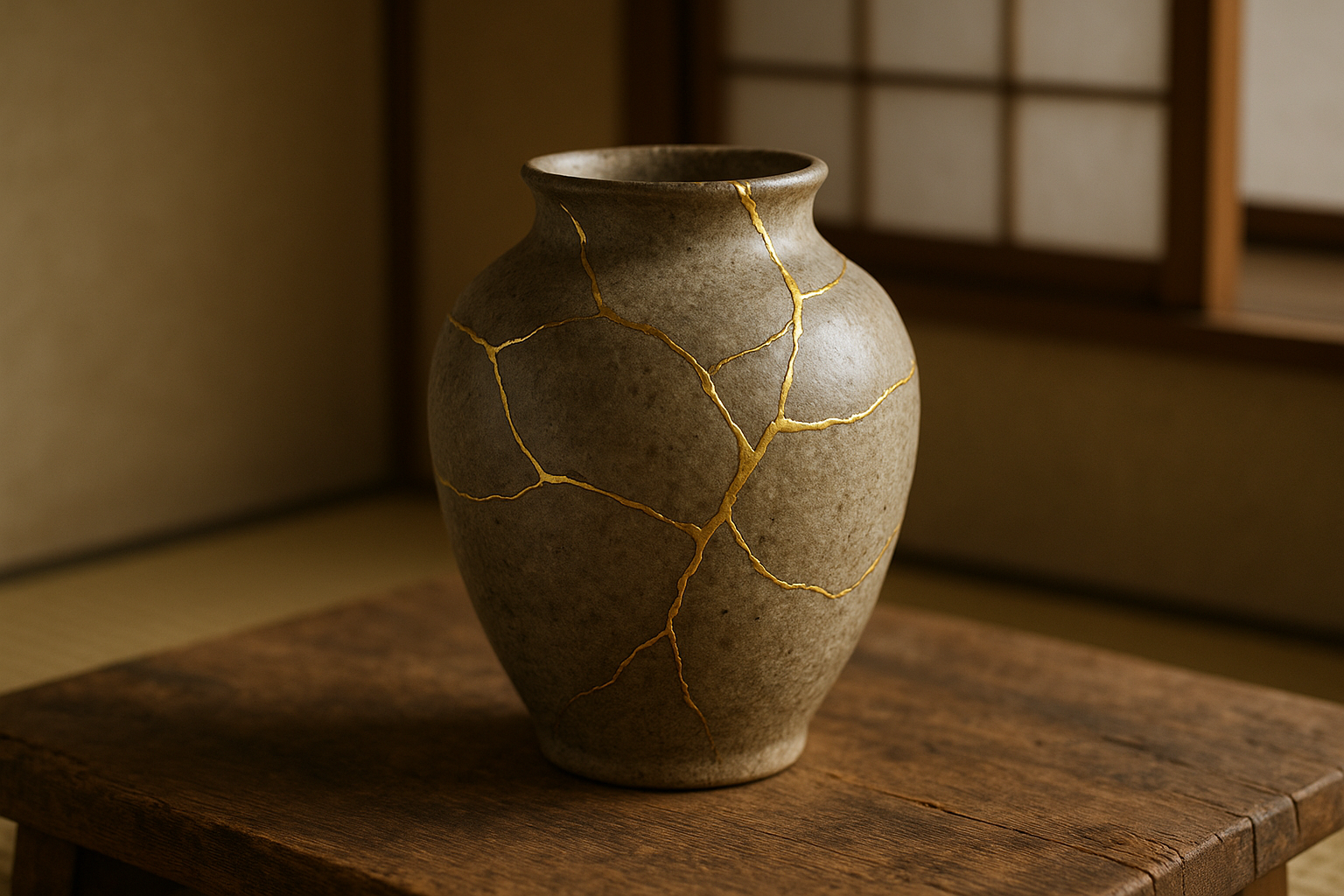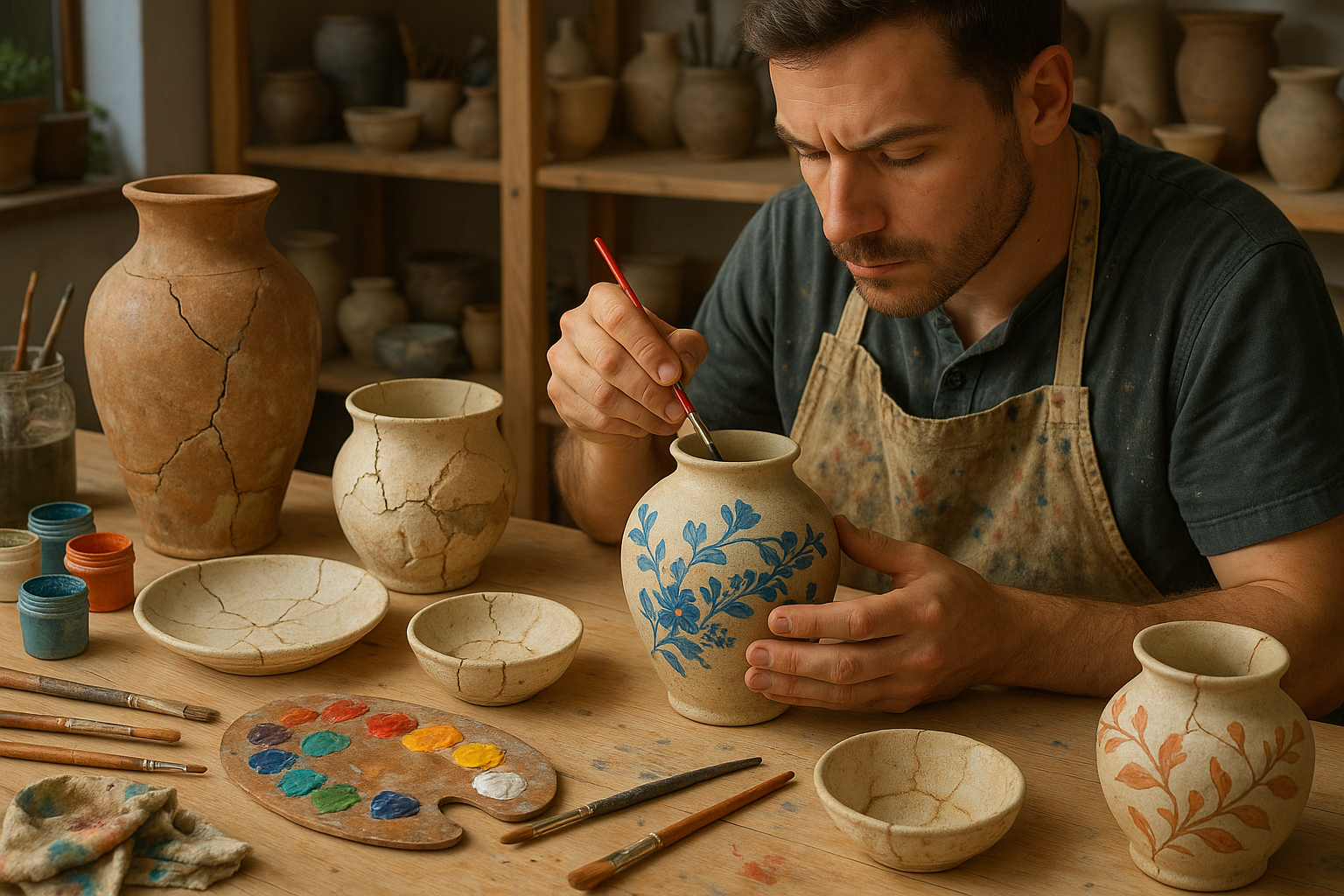In a world obsessed with perfection, where every flaw is often airbrushed away, there’s a profound beauty in embracing imperfections. Enter the ancient Japanese art of Kintsugi, a practice that transforms broken pottery into stunning works of art, not by hiding the fractures, but by highlighting them with gold. 🌟 This timeless technique is more than just a method of repair; it’s a philosophy that celebrates resilience and the beauty of imperfection. It’s a reminder that our scars tell a story, and sometimes, it’s those very scars that make us truly unique and beautiful.
Kintsugi, which translates to “golden joinery,” offers a fresh perspective on how we perceive flaws and failures. In our daily lives, we often go to great lengths to cover up what we consider imperfections, whether they be physical, emotional, or otherwise. But what if, instead of concealing these aspects, we highlighted them, allowing them to shine as part of our unique narrative? This ancient art invites us to shift our mindset and find beauty in the broken.
The practice of Kintsugi dates back to the 15th century and is deeply rooted in Japanese culture and philosophy, particularly the concept of “wabi-sabi,” which appreciates the beauty in imperfection and the transient nature of life. By understanding this cultural backdrop, we can better appreciate why Kintsugi is not just an art form but a way of life that resonates with modern sensibilities. It teaches us to embrace change and recognize the value in what we might otherwise discard.
In this article, we’ll explore the rich history of Kintsugi and its philosophical underpinnings, diving into how this art form developed and what it symbolizes. You’ll discover the meticulous process involved in creating a Kintsugi piece, from gathering the broken pieces to the careful application of lacquer mixed with gold powder. This intricate process is a metaphor for the journey of healing and self-acceptance, offering valuable lessons on patience and mindfulness.
Moreover, we’ll delve into the contemporary relevance of Kintsugi, examining how this ancient art can be applied to modern life. In an era where mental health and self-care are becoming increasingly important, Kintsugi offers a powerful metaphor for personal growth and resilience. We’ll discuss how this philosophy can be used to foster a healthier relationship with oneself, encouraging acceptance of our flaws and the courage to embrace them.
We’ll also look at the influence of Kintsugi beyond personal development, touching on its impact on various fields such as design, fashion, and even technology. This art form has inspired countless creators and innovators to rethink their approach, proving that beauty can indeed be found in the most unexpected places.
As we navigate through the nuances of Kintsugi, you’ll gain a deeper understanding of why this ancient practice has captivated the hearts and minds of so many, transcending cultural and temporal boundaries. By the end of this article, you’ll not only appreciate the aesthetic beauty of Kintsugi but also its profound philosophical insights that can transform how you view yourself and the world around you.
So, are you ready to embrace the cracks, both literal and metaphorical, and discover the golden beauty within? Let’s embark on this journey of transformation and learn to find strength and beauty in the places we least expect. 🌿

Conclusion: Embracing Imperfections with Kintsugi
Throughout this exploration of Kintsugi, the art of repairing broken pottery with gold, we’ve delved into its rich history and profound philosophy. Kintsugi is more than just an aesthetic practice; it embodies the principle that beauty can be found in imperfection, a concept that resonates deeply in our quest for authenticity in a world often obsessed with flawlessness.
We began by uncovering the origins of Kintsugi in Japan, tracing its journey from a practical method of repair to a revered art form. This ancient craft teaches us that breakage and repair are part of the history of an object, not something to disguise. By highlighting cracks with gold, Kintsugi invites us to cherish and celebrate the stories of resilience and transformation.
The philosophy of Kintsugi offers a powerful metaphor for life itself. Just as pottery can be mended with gold, our own personal growth can stem from embracing our past and learning from our experiences. This concept encourages us to view our imperfections not as defects but as marks of strength and character.
The application of Kintsugi extends beyond pottery. It inspires a mindset shift in how we approach challenges and setbacks in our daily lives. By accepting and embracing our flaws, we foster a greater sense of self-compassion and empathy towards others. This philosophy nurtures a community that values authenticity over perfection.
As we reflect on the timeless beauty of Kintsugi, let’s consider how we can incorporate its teachings into our own lives. Whether it’s through adopting a more forgiving attitude towards our own imperfections or finding beauty in the imperfections of others, the lessons of Kintsugi remain relevant and impactful.
We encourage you to share your thoughts on how Kintsugi has inspired you. How can you apply its principles to embrace imperfections in your own life? Feel free to comment below and share this article with friends and family who may benefit from the wisdom of this beautiful art form. 🌟
To learn more about the practice of Kintsugi and its philosophical underpinnings, you can explore the following resources:
Thank you for joining us on this journey of discovery. Let’s continue to find beauty in the broken and strength in the imperfect. ✨
Make sure to replace the URLs with active and reliable sources that align with the context of the article. Engage readers with strategic use of emojis and encourage interaction by inviting them to share their thoughts.




